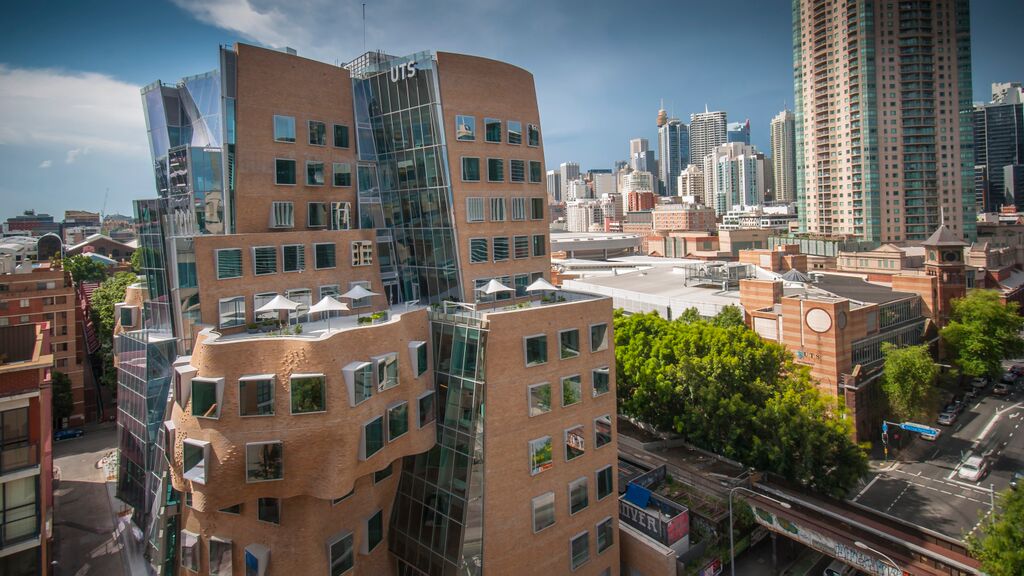Instruction Shapes Construction at the University of Technology Sydney
Over the past eight years, the University of Technology Sydney (UTS) has undergone a remarkable transition, from a tired campus that housed an unsung technical institute to a major presence in Australia’s largest city where learning and research draw the attention of students, the higher education community, industry, and the public.
In our latest case study, “Making a Place for Curricular Transformation at the University of Technology Sydney,” authors Nancy Fried Foster and Christine Mulhern unpack the process through which UTS transformed its physical campus and its pedagogical approach in tandem.

Dr. Chau Chak Wing Building at UTS, photo by Andrew Worssam
At the same time that it was implementing a highly interactive, practice-based learning approach across the institution, UTS undertook a billion-dollar construction project, building seven new technology-enhanced buildings and renovating many others to support overall growth as well as the curricular and pedagogic change. The new and refurbished spaces are designed specifically to support student learning through group work, flipped classes, and other new approaches. These spaces also advance the pedagogical changes by making it harder to default to large-scale lectures.
The accomplishment of this organization-wide, comprehensive transformation was made possible by leaders with a coherent vision who created the conditions that enabled staff to make the vision concrete from the bottom up. Relatively small experiments in instructional redesign gave both leadership and staff the confidence and know-how to scale up. In a relatively short period, the entire institution has been remade with an emphasis on active, career-focused learning.
While most of our case studies focus on institutions and students in the U.S., innovative approaches to post-secondary instruction and organizational change span borders. There is much to learn from UTS’s example—in Australia, the U.S., and the rest of the world.